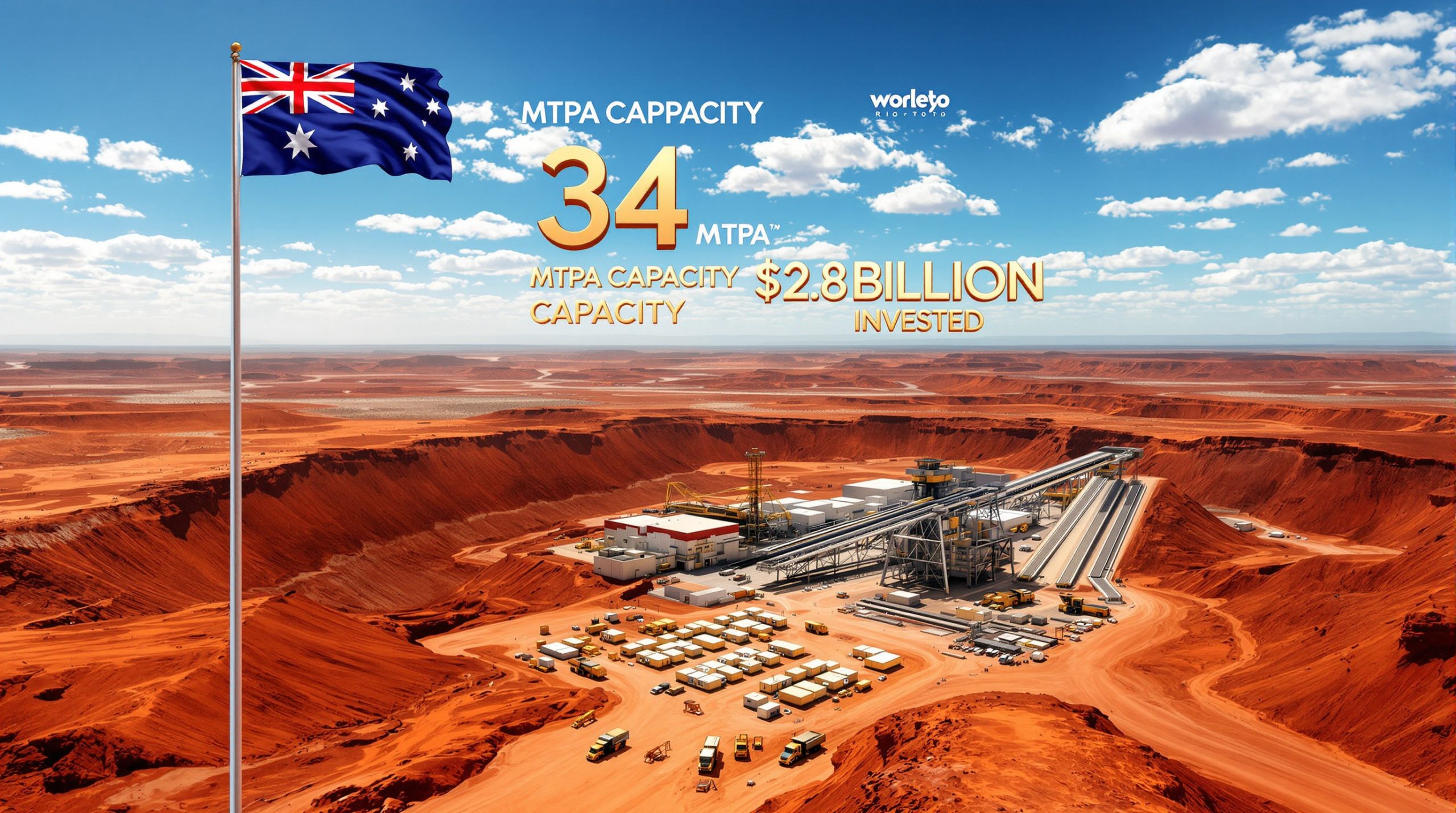The Global Tin Market: Supply Constraints and Price Dynamics
The tin market is facing significant challenges in 2025, with complex interplay between supply constraints and price pressures creating a unique market environment. Despite logistical bottlenecks and production challenges, tin prices remain under unexpected pressure, creating a paradoxical situation for market participants and investors alike.
Current Price Trends and Market Positioning
The SHFE tin contract (SN2508) is currently trading at 266,610 yuan/mt, down 0.88% from previous sessions, while LME tin stands at 33,560 USD/mt, showing a similar 0.88% decline. These parallel movements indicate strong correlation between Chinese and international tin market analysis despite regional supply differences.
Key resistance levels for LME tin hover between 33,000-34,000 USD/mt, creating a significant psychological barrier for market participants. Meanwhile, analysts project the SHFE tin trading range to remain between 265,000-272,000 yuan/mt in the short term.
The US dollar index has slightly weakened to 96.99, offering modest support for metal prices as commodities priced in dollars typically benefit from currency depreciation. This macroeconomic factor provides some counterbalance to the bearish sentiment in tin markets.
"The dollar's weakness should theoretically support metal prices, but tin's unique supply-demand dynamics are creating a more complex market reality," notes Shanghai Metal Market in their July 2025 analysis.
Supply Chain Disruptions Affecting Tin Markets
Production resumption in Myanmar's Wa region, a critical tin ore source for Chinese smelters, continues to progress at a discouragingly slow pace. This situation is further complicated by Thailand's transportation ban, which effectively blocks critical import channels for tin ore reaching Chinese refineries.
The combined impact of these disruptions is substantial, with SMM estimating a reduction in Chinese tin ore imports ranging from 500 to 1,000 metric tons for June 2025 alone. This represents a significant shortfall in a market already experiencing tightness.
Raw material inventories at Chinese smelters, particularly in the Yunnan and Jiangxi provinces, have fallen below 30-day sufficiency levels—a critical threshold that typically triggers production adjustments. Indeed, multiple facilities have implemented maintenance schedules and production cuts, further tightening refined tin supply.
The geological characteristics of Myanmar's tin deposits contribute to the supply challenges. The region's ore contains high concentrations of cassiterite (SnO₂) with grades averaging 2-4%, making these deposits particularly valuable and difficult to replace with alternative sources on short notice.
Why Are Tin Prices Under Pressure Despite Supply Constraints?
This paradoxical market situation—prices falling despite clear supply constraints—stems from a combination of production challenges, market sentiment shifts, and inventory dynamics that are unique to the current tin market structure.
Smelter-Side Production Challenges
Tin smelters in Yunnan and Jiangxi provinces are operating with increasingly limited raw material reserves. With stockpiles falling below the critical 30-day threshold, many facilities have been forced to implement what industry insiders call "gradient production cuts"—a tiered reduction approach where output is systematically decreased based on inventory levels.
These production cuts are occurring alongside scheduled maintenance periods, which further reduces operational capacity across the sector. Industry sources indicate that several major smelters have advanced their maintenance schedules specifically to address raw material shortages.
The tightening marginal supply from these production adjustments would typically create strong price support. However, this expected price effect is being counterbalanced by other market forces, creating the unusual market dynamic currently observed.
Market Sentiment and Trading Behavior
A key indicator of market sentiment—open interest in the most-traded SHFE tin contract—has been steadily decreasing, signaling reduced trader engagement and speculative interest. Market data shows increased profit-taking among previously bullish investors, who appear to be locking in gains rather than maintaining long positions.
This cautious approach largely stems from a wait-and-see attitude toward upcoming policy impacts, particularly regarding the US‑China trade war set to effect on August 1, 2025, and domestic "anti-cut-throat competition" measures affecting the photovoltaic industry chain—a significant tin consumer.
"The market's upside potential appears limited due to inventory accumulation dynamics, while the downside is simultaneously protected by ore-side cost floors," explains SMM's tin market analysis team.
This creates a situation where, despite clear supply constraints, market psychology and inventory management are preventing the price appreciation typically associated with supply shortfalls.
How Are Macroeconomic Factors Influencing the Tin Market?
Tin prices are influenced not only by industry-specific factors but also by broader economic developments, particularly monetary policy decisions and international trade relations.
US Monetary and Fiscal Policy Impacts
The passage of what's being called the "Big and Beautiful" bill has raised the US debt ceiling, creating new fiscal dynamics that affect commodity markets. The resultant Treasury financing pressure under the current high interest rate environment is creating strain within financial markets.
Market analysts increasingly anticipate a Federal Reserve interest rate cut in September 2025, which could significantly impact metal commodities. Historically, rate cuts tend to weaken the US dollar, making dollar-denominated commodities like tin more affordable for holders of other currencies.
The current weakening of the US dollar, with the index at 96.99, is already providing modest support for metal commodities. However, this effect appears insufficient to overcome the specific market dynamics currently constraining tin prices.
China-US Trade Relations and Industry Policies
New US economy tariffs effective August 1, 2025, have created significant uncertainty in metal markets. These measures, combined with China's domestic "anti-cut-throat competition" regulations affecting the photovoltaic industry chain (a significant tin consumer), have created a complex regulatory environment.
This regulatory uncertainty has contributed to market participants adopting a cautious trading approach amid these developments. The long-term implications of these policies remain unclear, adding another layer of complexity to price forecast insights.
Industry experts note that tin's use in electronics manufacturing and solar panel production makes it particularly sensitive to both tariff policies and industrial regulations affecting technology sectors.
What's the Outlook for Tin Markets in 2025?
Understanding the potential trajectory of tin markets requires examining supply forecasts, price projections, and identifying key indicators that market participants should monitor.
Supply-Side Forecast
Constraints from Myanmar's production limitations are expected to continue through at least Q3 2025, with limited visibility into recovery timelines. The ongoing transportation challenges affecting ore imports through Thailand show no immediate signs of resolution, further complicating supply forecasts.
Smelter production cuts are likely to persist as raw material inventory challenges continue, with several major facilities planning extended maintenance periods through the summer months. This sustained supply tightness would typically create strong price support, but must be considered alongside other market factors.
The geological nature of tin deposits presents additional challenges. Unlike some metals, high-grade tin ore is geographically concentrated in specific regions, making supply diversification difficult in the short term. The quality of Myanmar's deposits makes them particularly difficult to replace with alternative sources.
Price Projection Scenarios
SHFE tin is likely to maintain sideways movement within the established range of 265,000-272,000 yuan/mt in the near term. The upside appears limited by inventory accumulation dynamics, while the downside is protected by production cost floors estimated at approximately 260,000 yuan/mt.
LME tin performance remains tied to macroeconomic breakthrough potential, with key resistance at the 33,000-34,000 USD/mt level. A decisive break above this range would require significant macroeconomic catalysts or unexpected supply disruptions beyond current constraints.
There's a notable divergence between technical indicators and fundamental factors, with technical analysis suggesting potential downside risks while supply fundamentals indicate support at current levels. This tension contributes to the range-bound price action likely to characterize the market in coming months.
Key Indicators to Monitor
Market participants should closely monitor several critical indicators that will influence tin market dynamics:
- Myanmar production recovery timeline: Any acceleration or further delays will significantly impact Chinese smelter supply chains
- Thailand's transportation policy developments: Changes to cross-border regulations could quickly alter supply dynamics
- Chinese smelter inventory levels: Continued depletion below 20-day levels would likely trigger more aggressive production cuts
- US Federal Reserve interest rate decisions: September meeting outcomes will impact dollar strength and commodity pricing
- Implementation effects of new tariff policies: Initial market responses after the August 1 implementation date
Additionally, tracking refined tin inventory levels at both SHFE and LME warehouses will provide important insights into the balance between supply constraints and demand conditions.
FAQ: Essential Tin Market Questions
What are the main factors constraining tin supply in 2025?
Production slowdowns in Myanmar's Wa region combined with Thailand's transportation ban have significantly reduced tin ore availability. Chinese smelters are operating with less than 30 days of raw material inventory, forcing maintenance shutdowns and production cuts that further tighten refined tin supply.
The geological characteristics of tin deposits contribute to these challenges. Unlike some metals, economically viable tin ore is concentrated in specific regions, with Myanmar's deposits featuring particularly high cassiterite content that makes them difficult to replace with alternative sources on short notice.
How are global economic policies affecting tin prices?
US fiscal developments, including the "Big and Beautiful" bill and potential Federal Reserve interest rate cuts, are creating downward pressure on the US dollar, which typically supports metal prices. The dollar index at 96.99 reflects this weakening trend.
Meanwhile, new China-US tariffs (effective August 2025) and Chinese industry regulations targeting the photovoltaic sector are creating market uncertainty. Tin's significant role in electronics manufacturing and solar panel production makes it particularly sensitive to these policy shifts.
Market participants are adopting a wait-and-see approach until the implementation effects of these policies become clearer, contributing to the current range-bound price action.
What price range can we expect for tin in the coming months?
SHFE tin is projected to trade between 265,000-272,000 yuan/mt, with upside limited by inventory accumulation and downside supported by production costs estimated around 260,000 yuan/mt. These production costs create a natural price floor as smelters would reduce output rather than operate at a loss for extended periods.
LME tin faces key resistance at 33,000-34,000 USD/mt, with breakthrough dependent on macroeconomic developments, particularly Federal Reserve policy decisions and dollar strength. A sustained move above these levels would require significant shifts in either supply dynamics or mining trends 2025.
The disconnect between technical indicators and fundamental factors creates an unusual market environment where traditional price forecasting models may prove less reliable than under normal conditions.
Understanding Tin's Strategic Importance
Tin remains a critical metal for modern technology, with applications ranging from electronics manufacturing to renewable energy infrastructure. The current market dynamics highlight the strategic importance of this often-overlooked metal in global supply chains.
While current price action remains constrained, the fundamental supply issues affecting the market create potential for significant volatility should any additional disruptions occur. Market participants should maintain vigilance regarding both industry-specific developments and broader iron ore price trends that could trigger rapid market repricing.
As transportation and production challenges persist through 2025, the delicate balance between supply constraints and demand fluctuations will continue to define this unique period in tin market analysis history.
Looking for Early Investment Opportunities in Tin Market Trends?
Stay ahead of critical tin market developments with Discovery Alert's proprietary Discovery IQ model, which provides real-time notifications on significant ASX mineral discoveries and market-moving announcements. Visit the Discovery Alert discoveries page to understand how identifying market shifts early can lead to substantial investment returns.




